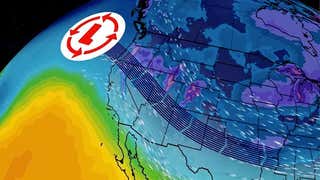

US
°C





The image above shows the mouth of the Amazon River where it empties into the Atlantic Ocean. Captured by NASA on June 10, 2002.
(Jacques Descloitres, MODIS Land Rapid Response Team, NASA/GSFC)
As coral bleaching continues to strain reef communities across the globe, an international team of researchers has stumbled across a promising, 600-mile-long discovery.
Starting at the mouth of the Amazon river, a sponge and coral reef sprawls across more than 3,600 square miles of ocean floor, according to a study recently published in Science. It stretches along the edge of the South American continental shelf, from the southern tip of French Guiana to Maranhão State in Brazil.
The researchers couldn’t have come across this massive reef at a better time; Tuesday, reef scientist Terry Hughes announced that 93 percent of the Great Barrier Reef has been devastated by coral bleaching caused by record-warm water driven by El Niño and climate change.
University of Georgia oceanographer Patricia Yager was skeptical when her colleague, Brazilian oceanographer Rodrigo Moura, suggested there was a reef in their research area, according to The Atlantic - especially since runoff composed of nutrients, waste and organic matter from nearby rainforests and farmlands create murky waters in the Amazon.
(MORE: Great Barrier Reef Coral Bleaching Reaches 'Severe' Level)
“I kind of chuckled when Rodrigo first approached me about looking for reefs. I mean, it’s kind of dark, it’s muddy - it’s the Amazon River,” Yager told The Atlantic. “But he pulls out this paper from 1977, saying these researchers had managed to catch a few fish that would indicatereefs are there.”
Researchers sort through samples gathered after dredging in the newly-discovered coral reef in the Amazon River.
(F. Moraes, Instituto de Pesquisas Jardim Botânico do Rio de Janeiro)
When their team had some extra time after completing their main research goal, they found a spot and lowered a borrowed dredge into the Amazon’s abyss. It came back up with a collection of corals, sponges, stars and fish, proving there had been a coral reef beneath them all along, according to the study.
“I was flabbergasted, as were the rest of the 30 oceanographers,” said Yager.
Given the muddy conditions in the Amazon, it’s surprising that a reef could exist there at all. However, follow-up trips conducted by Moura and other Brazilian scientists suggest that the biology of the reef changes based on location and how much sun it gets, Science Alert also reports.
The southern section of the reef is only masked by murky plume for three months out of the year, which allows the area to complete photosynthesis, accordingto the study. It also contains more stag horns and other colorful corals. The north section is dominated by sponges and carnivorous creaturesbut is blocked from sunlight more than half of the year.
(MORE: Hopeful Message Hidden in Dead Reefs)
Now the most northernmost reef in Brazil, the expansive coral community still has outside threats to overcome. While climate change poses a major issue, there’s an even more pressing obstacle.
“Remarkably, 125 exploratory blocks for oil drilling in the Amazon shelf were offered in an international auction in 2013 … 35 of which were acquired by domestic and transnational companies,” the study authors wrote. “A total of 80 exploratory blocks have been acquired for oil drilling in the study region, 20 of which are already producing.”
These blocks will soon start producing close to the reefs.
“[Moura] sent me a map of the leases, and they’re just right there - right at the shelf break, right on top of the reef,” Yager told The Atlantic. “We don’t even have a good map of the reefs yet.”
MORE ON WEATHER.COM: Coral Bleaching












